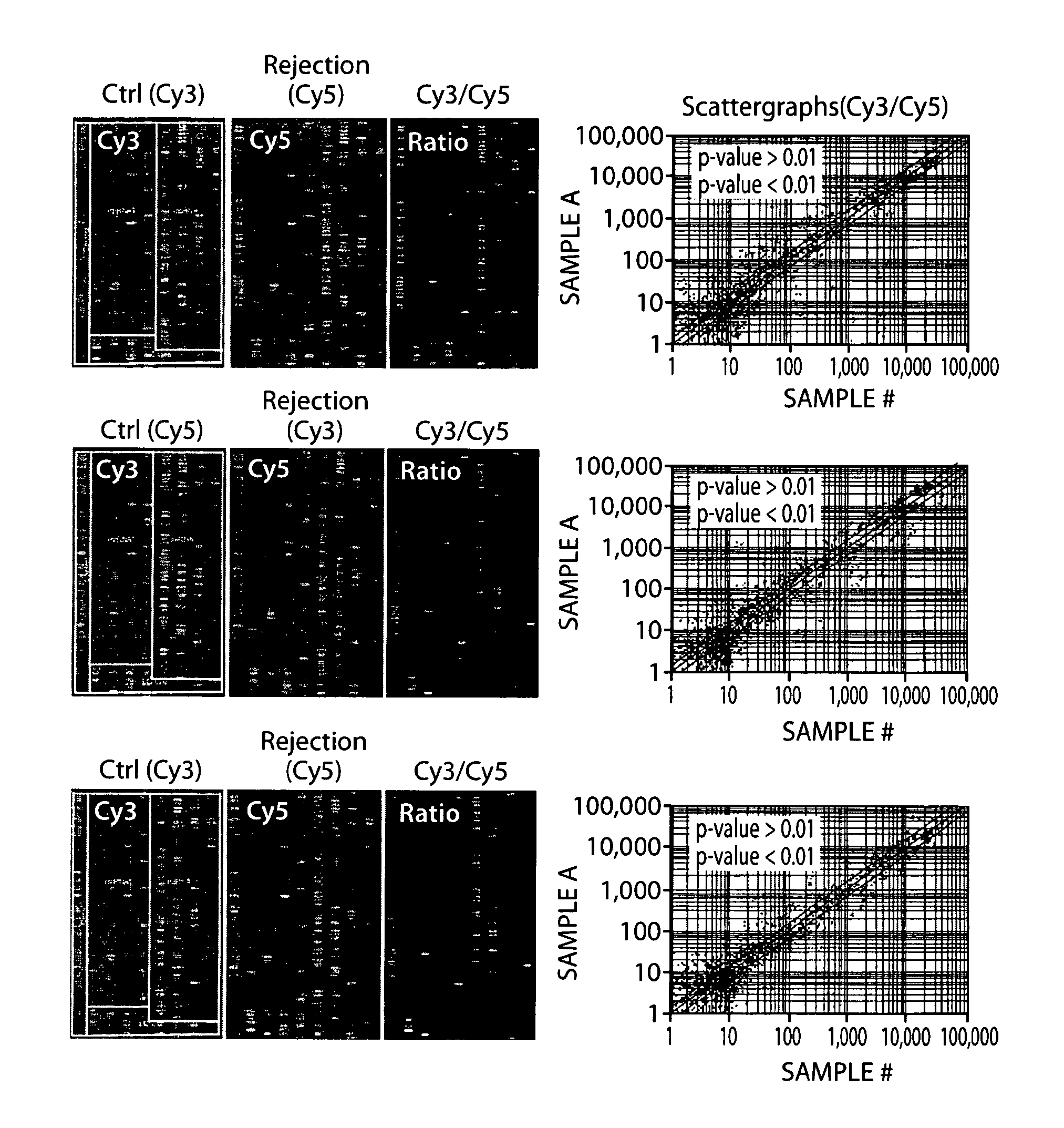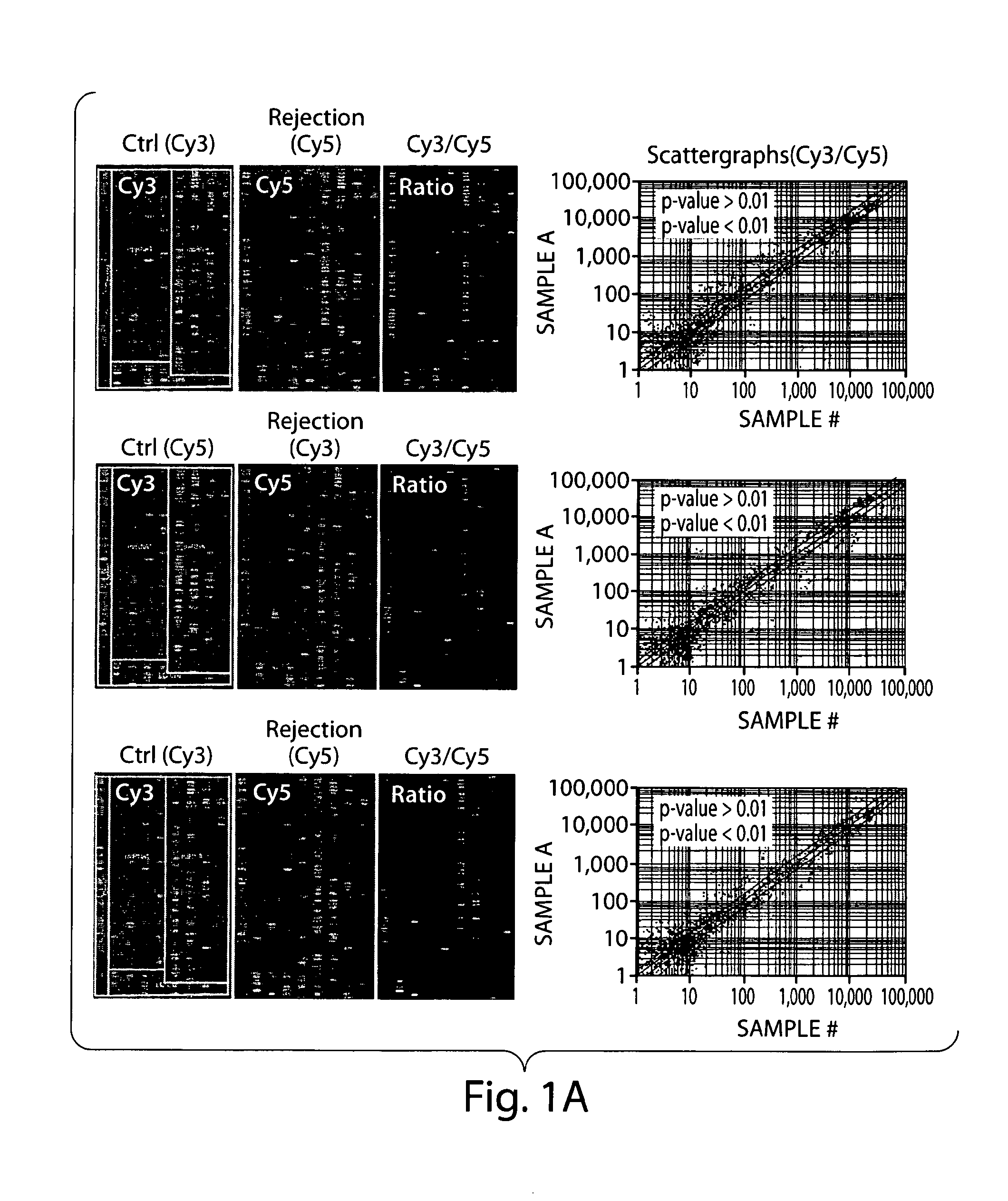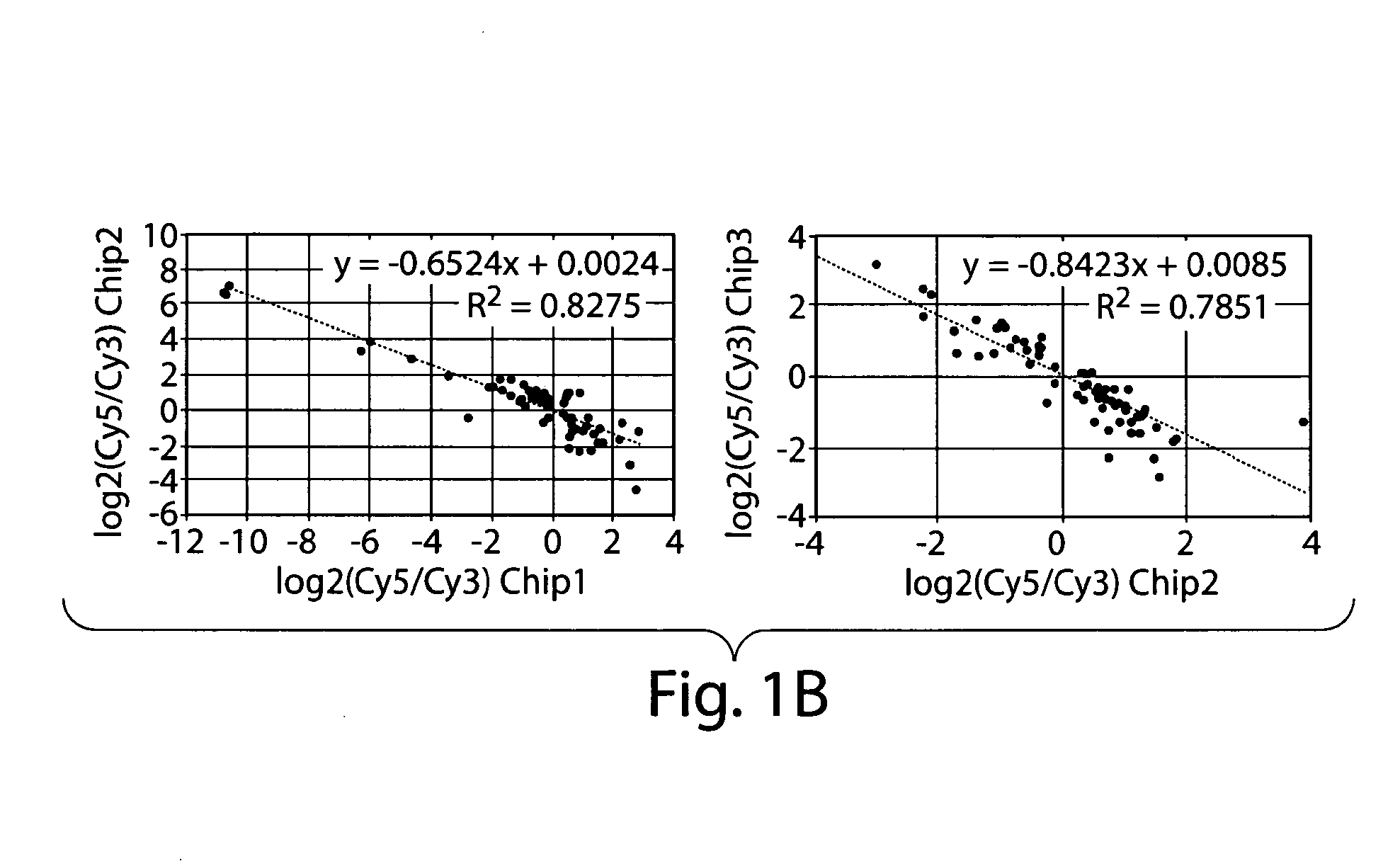Detection of organ rejection
a technology for organs and mrnas, applied in the field of detection of organ rejection, can solve the problems of subjective pathological interpretation, increased health care costs, and low but definite morbidity and death risks, and achieve the effect of regulating the stability or translational efficiency of target mrnas
- Summary
- Abstract
- Description
- Claims
- Application Information
AI Technical Summary
Benefits of technology
Problems solved by technology
Method used
Image
Examples
example 1
Differential Regulation of microRNA Expression Associated with Organ Rejection
[0145]MicroRNAs are highly conserved across species, especially human, mouse, and rat. Thus, in order to minimize biological variation and maximize reproducibility of experimental results, the mouse heterotopic cardiac transplantation model presents an attractive model system to study microRNA expression.
[0146]To verify the existence of differentially expressed microRNAs from leukocytes of mice with and without cardiac resection, three sets of total RNA were harvested from spleens, a leukocyte-rich organ, after heterotopic cardiac transplantation. MicroRNA was isolated, purified, and then fluorescently hybridized with Cy3 or Cy5 fluorescent labels to mouse microRNA chips containing a total of 464 oligonucleotides for mature or pre-microRNAs (LC Sciences, Houston, Tex.). Each signal represents the average of the same microRNA oligo (n=6) that was separately spotted (FIG. 1, A and B). From this data, a ratio...
PUM
| Property | Measurement | Unit |
|---|---|---|
| Fraction | aaaaa | aaaaa |
Abstract
Description
Claims
Application Information
 Login to View More
Login to View More - R&D
- Intellectual Property
- Life Sciences
- Materials
- Tech Scout
- Unparalleled Data Quality
- Higher Quality Content
- 60% Fewer Hallucinations
Browse by: Latest US Patents, China's latest patents, Technical Efficacy Thesaurus, Application Domain, Technology Topic, Popular Technical Reports.
© 2025 PatSnap. All rights reserved.Legal|Privacy policy|Modern Slavery Act Transparency Statement|Sitemap|About US| Contact US: help@patsnap.com



